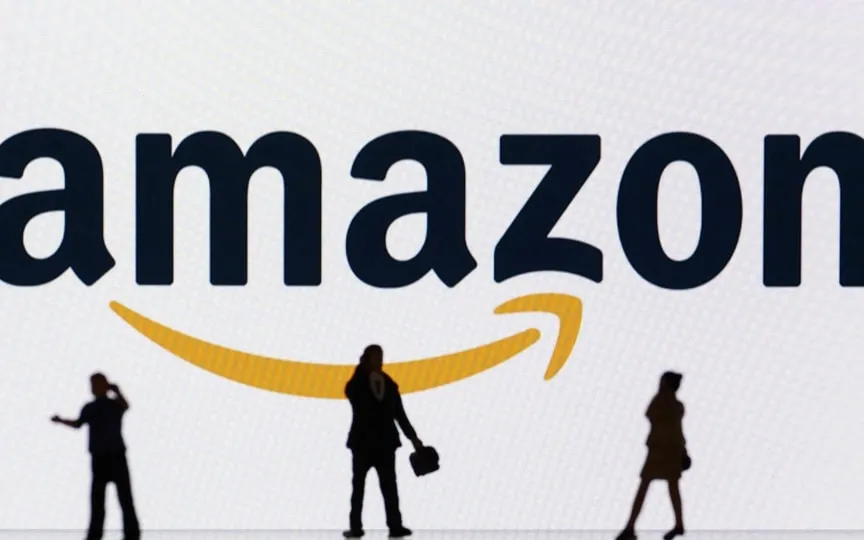FTC Alleges Amazon Used Deceptive Tactics to Obstruct Antitrust Investigation
Fresh details released by the US Federal Trade Commission in a less redacted complaint against Amazon.com Inc. reveal that the company increased the number of low-quality advertisements in order to enhance its profits and deliberately erased internal communications to obstruct a federal antitrust investigation.
Amazon founder and former CEO Jeff Bezos personally ordered executives to approve more ads, even ones the company had internally flagged as “defective,” indicating they were not relevant to users’ searches, according to a new version of the complaint.
We are now on WhatsApp. Click to join.
The FTC claims that Amazon’s increased use of ads boosts profits while harming sellers and consumers by making it harder for shoppers to find the products they’re looking for. “We’d be crazy not to increase the number of ads we show shoppers,” the FTC quoted Amazon executives as saying.
One executive put together a series of flawed ads featuring “buck urine,” which appears in response to searches for Los Angeles Lakers basketball team “water bottles” or T-shirts in response to inquiries about Seattle Seahawks football team products.
In third-quarter 2023 results announced last week, Amazon reported $12.1 billion in advertising revenue, making the company’s advertising unit its fastest-growing business.
The company also deleted and destroyed internal communications using Signal’s “lost message” feature for more than two years, from June 2019 to at least early 2022, the FTC alleged.
Amazon did not immediately respond to a request for comment on the new ad data released by the FTC and claims that the company destroyed internal messages.
The agency sued Amazon in September, accusing the e-commerce giant of monopolizing e-commerce services and stifling competition. The complaint alleges that the company illegally forces sellers on its platform to use its logistics and shipping services in exchange for prominent placement and penalizes merchants who offer lower prices on competing sites.
Amazon has said it will challenge the lawsuit in court, adding that it deviates “radically” from the agency’s mission to protect consumers and is “wrong on the facts and the law.”
The original complaint was heavily redacted, covering up information about Amazon’s operations, including information about the company’s scale, its Prime subscriber base and a pricing algorithm called “Project Nessie,” which the agency said raised costs for shoppers, undermining the company’s claim of prioritization. the well-being of its customers.
In the weeks that followed, the FTC and Amazon sparred over what details could be shared publicly, with the company choosing to protect information that could provide competitors with insights into its e-commerce strategy and business metrics.
The seller filled Prime
According to the FTC’s new complaint, 98% of Amazon sales come directly from the so-called “Buy Box,” where the company selects one featured offer from among sellers of a specific product.
The FTC alleges that Amazon has illegally tied the use of its marketplace to its logistics service — Fulfillment by Amazon — where merchants pay Amazon to handle warehousing and shipping. Using the logistics service helps ensure that the merchant’s products are eligible for Amazon’s Prime subscription service and the “Buy Box”.
Amazon began offering a program called Seller Fulfilled Prime in 2015 that allowed merchants to fulfill the promise of fast delivery without using the company’s logistics service, the FTC alleged. At its peak, 15,000 sellers were using it, according to the FTC. Amazon was internally concerned that the program was “strategically risky” and could harm the company’s own logistics service, the FTC alleged. One executive said he was “losing his mind” after United Parcel Service Inc. advertised merchants that it could fill orders.
In 2019, Amazon stopped accepting new merchants into the program.
“Amazon chose to prioritize excluding competitors and foreclosing competition, even at the cost to Amazon’s customers,” the FTC alleged.
Amazon said in a statement that the FTC cited “misleading numbers” and its original program did not meet “our customers’ high standards and expectations for Prime.”
“Project Nessie”
The FTC alleged that Amazon created an algorithmic tool, nicknamed Project Nessie, that generated more than $1 billion in additional profits for the company by raising prices on its marketplaces.
Amazon and many other online retailers use automated tools to match their pricing to what their competitors are charging. Recognizing that many websites set their pricing tools to match Amazon’s marketplace, the company created Nessie to raise prices on products that other retailers matched, the FTC alleged.
“The FTC alleges that an old Amazon pricing algorithm called Nessie is an unfair competitive practice that led to price increases for consumers,” Amazon said in a statement responding to the new details of the less redacted complaint. “This grossly mischaracterizes this tool. Nessie was trying to prevent our price matching from leading to unusual outcomes where prices became so low they were unsustainable.”
One more thing! ReturnByte is now on WhatsApp channels! Follow us by clicking the link to never miss any updates from the world of technology. Click here to join now!




